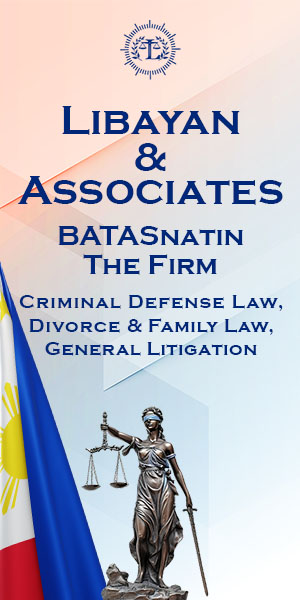MOVABLE PROPERTY
Art. 416. The following things are deemed to be personal property:
(1) Those movables susceptible of appropriation which are not included in the preceding article;
(2) Real property which by any special provision of law is considered as personal property;
(3) Forces of nature which are brought under control by science; and
(4) In general, all things which can be transported from place to place without impairment of the real property to which they are fixed. (335a)
Art. 417. The following are also considered as personal property:
(1) Obligations and actions which have for their object movables or demandable sums; and
(2) Shares of stock of agricultural, commercial and industrial entities, although they may have real estate. (336a)
Art. 418. Movable property is either consumable or nonconsumable. To the first class belong those movables which cannot be used in a manner appropriate to their nature without their being consumed;
to the second class belong all the others. (337)
CLASSIFICATION OF MOVABLE PROPERTY
1. According to their nature—consumable or non-consummable
2. According the the intent of the parties—fungible or non-fungible
PROPERTY IN RELATION TO THE PERSON TO WHOM IT BELONGS
Art. 419. Property is either of public dominion or of private ownership. (338)
Art. 420. The following things are property of public dominion:
(1) Those intended for public use, such as roads, canals, rivers, torrents, ports and bridges constructed by the State, banks, shores, roadsteads, and others of similar character;
(2) Those which belong to the State, without being for public use, and are intended for some public service or for the development of the national wealth. (339a)
PUBLIC DOMINION
Means ownership by the State in that the State has control and administration
Ownership by the public in general
THREE KINDS OF PROPERTY UNDER PUBLIC DOMINION
1. For public use—may be used by anybody
2. For public service—may be used only by authorized persons
3. For the development of national wealth—like our natural resources
CHARACTERISTICS OF PROPERTIES OF PUBLIC DOMINION
1. They are outside the commerce of man, and cannot be leased, donated, sold, or be the object of any contract, except insofar as they may be the subject of repairs or improvements and other incidental things of similar character
2. They cannot be acquired by prescription, no matter how long the possession of the properties has been
3. They cannot be registered under the LRA and be the subject of a Torrens title
4. They as well as their usufruct may not be levied upon by execution nor can they be attached
5. In general, they may be used by everybody
6. They may be either real or personal property
Art. 421. All other property of the State, which is not of the character stated in the preceding article, is patrimonial property. (340a)
PATRIMONIAL PROPERTY
Property that the State owns which is not devoted to public use, public service or to the development of the national wealth
Owned by the State in its private capacity
Art. 422. Property of public dominion, when no longer intended for public use or for public service, shall form part of the patrimonial property of the State. (341a)
Art. 423. The property of provinces, cities, and municipalities is divided into property for public use and patrimonial property. (343)
PROPERTIES OF POLITICAL SUBDIVISIONS
1. Property for public use
2. Patrimonial property
ALIENATION OF THE PROPERTIES
Properties of a political subdivision for public use cannot be alienated as such and may not be acquired through prescription
Properties of a political subdivision which are patrimonial in character may be alienated, and may be acquired by others through prescription
Art. 424. Property for public use, in the provinces, cities, and municipalities, consist of the provincial roads, city streets, municipal streets, the squares, fountains, public waters,
promenades, and public works for public service paid for by said provinces, cities, or municipalities.
All other property possessed by any of them is patrimonial and shall be governed by this Code, without prejudice to the provisions of special laws. (344a)
Art. 425. Property of private ownership, besides the patrimonial property of the State, provinces, cities, and municipalities, consists of all property belonging to private persons, either individually or
collectively. (345a)
PROVISIONS COMMON TO THE THREE PRECEDING CHAPTERS
Art. 426. Whenever by provision of the law, or an individual declaration, the expression "immovable things or property," or "movable things or property," is used, it shall be deemed to
include, respectively, the things enumerated in Chapter 1 and Chapter 2.
Whenever the word "muebles," or "furniture," is used alone, it shall not be deemed to include money, credits, commercial securities, stocks and bonds, jewelry, scientific or artistic
collections, books, medals, arms, clothing, horses or carriages and their accessories, grains, liquids and merchandise, or other things which do not have as their principal object the furnishing or
ornamenting of a building, except where from the context of the law, or the individual declaration, the contrary clearly appears. (346a)
USE OF THE WORD MUEBLES
Word used synonymously with furniture
Furniture has generally for its principal object the furnishing or ornamenting of a building



 Spotify
Spotify  iTunes
iTunes  AppleMusic
AppleMusic  YouTube
YouTube 


